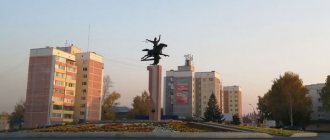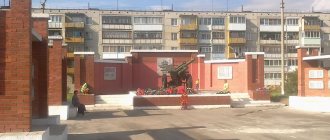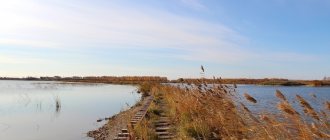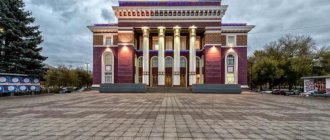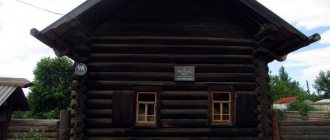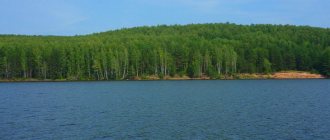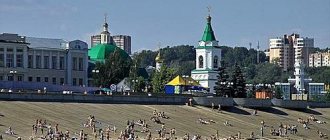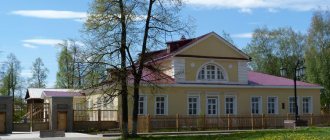General information and history
The young, but not inferior in importance to the capital of the republic, the city of Salavat is located on the picturesque bank of the Belaya River in the south of the Republic of Bashkortostan. Today Salavat, despite its rather modest urban scale of 102,000 hectares and a population of just over 160 thousand people, is the largest petrochemical center in Bashkiria. Thanks to its natural resources, it feeds and waters its inhabitants, providing them with a prosperous and happy life for many, many years to come.
Lenin Square
Even before 1948 of the last century, there was a steppe on the site of Salavat. Among the serene, almost wild nature, herds of cows and horses grazed, fish splashed in numerous small lakes, and feather grass rustled in the wind. But it soon became clear that the land in these parts was literally saturated with oil, so it was decided to develop the area as a center for petrochemicals and oil refining. So, very quickly, in the middle of the steppe wilderness, a working barracks-type settlement with the simple name “Novostroika” appeared. Near the settlement, the construction of petrochemical plant No. 18 began, which later became known as OJSC Salavatnefteorgsintez (today OJSC Gazprom Neftekhim Salavat). Prisoners from all over the Soviet Union were brought to the large-scale construction site. They worked together with local residents and lived mainly in neighboring Ishimbay. Of course, not everyone had enough housing, so people sometimes had to live in difficult conditions, wintering in tents. A year later, “Novostroika” was given a different, more euphonious name, “Salavat.”
Salavat's first photo
They named it in honor of the national Bashkir hero Salavat Yulaev. It is interesting to note that in Bashkiria at that time there was the Salavat district, which was located in a completely different place, in the north of the republic, and had nothing in common with the new settlement. Except that now they were called the same. It was from there that the legendary Bashkir commander Salavat Yulaev was from. Why the city under construction was named by this name, since it had nothing to do with the city, still remains a mystery.
In the early fifties, the small village gradually began to turn into a large industrial center. In 1951, a mechanical repair plant began operating here, which later became a machine-building plant, and now bears the name “Salavatneftemash”. A little later, the Salavat thermal power plant, the plant’s catalyst factory and other petrochemical facilities were put into operation. During these same years, the railway came to the village. Salavat developed so quickly that its scale soon went beyond the village boundaries. Already in 1954, Salavat received city status. This was facilitated by rapid population growth and industrial development. The barracks were replaced by two-three-story brick houses, and already in the sixties the first five-story “Khrushchev” buildings appeared on the city streets. The streets at that time had simple and most popular names for that time: “Pervomaiskaya”, “Lenina”, “Builders”... They still exist today and are considered the most beautiful in the city.
Today, largely thanks to the arrival of Gazprom, the city has risen to a new level of development. Businesses are consolidating, production is being consolidated, new residential areas and cultural institutions are being built. In general, Salavat is blooming with new colors.
Train Station
Salavat railway station is a station in the Bashkir region of the Kuibyshev railway. Station type: freight and passenger. The railway station is located at st. Vokzalnaya, 2a. The distance from the city center to the station is 3 km. The railway station is open every day around the clock.
Long-distance trains pass through the railway station in Salavat in the following directions: Ufa, St. Petersburg, Orenburg, Tashkent, Moscow. Suburban trains are also serviced at the station.
Climate and ecology of Salavat
The climate in Salavat is no different from other cities in central Russia. Winter here is snowy, long, often with severe frosts. Due to the fact that the city is located in a lowland, fog is common in winter. In addition, very often these fogs arise due to fumes at the Petrochemical Plant. The average temperature in winter is somewhere around minus 18-20 degrees. Sometimes, of course, it reaches minus 35 degrees. And in spring it is warm and sunny in Salavat.
The Belaya River floods widely at the end of April. Since the city is located in close proximity to the river, earlier, back in the fifties, part of the city was flooded. This problem was solved by cementing the left bank of the river. In summer there are truly hot days. July and mid-August are especially different in this regard. It happens that the summer sun begins to melt the asphalt. And besides, the degrees are increased by the factories puffing away at a distance. Salavat residents find salvation on the shady banks of the Belaya. Although the river is considered polluted, saturated with wastewater from the Gazprom Neftekhim Salavat OJSC enterprise, no one thinks that you can’t swim here. Salavat residents seem to have long ago developed immunity from all possible diseases associated with dangerous work in the city’s industries. Nothing really scares them; they are optimists. And they know how to rejoice in their successes. Among their own people, jokes and anecdotes are written related to the unfavorable ecology of the area.
Beach in Salavat
Jokes aside, but the bitter truth is better than a sweet lie. There is no need to explain that oil production brings more than just benefits to the city. Due to the close location of the industrial zone to the residential area (and besides, it is located higher than the city in relief), the smoke from factory chimneys flies directly into the city, polluting the air we breathe. There has always been an environmental danger, but in Soviet times people skillfully turned a blind eye to it. It was impossible to say that the city was hazardous to health. Who will work then? And the word “ecology” was not known then. The city was as if shrouded in a white cloud, because they were not only engaged in oil production. Salavat enterprises produced rocket fuel and carried out underground nuclear explosions. Yes, they did everything they could to boost the industry of their homeland. As a result, emissions of pollutants into the atmosphere amounted to about 81 thousand tons. In terms of one person it turned out to be 515 kg. These shocking figures had a sobering effect.
View of the industrial area
In order to somehow change the environmental situation, the city government has developed a whole program to control waste emissions from enterprises and plant greenery on the streets. Since huge areas of forest were destroyed during the construction of the city, there is almost no greenery left in the city. There was only one thing left: to increase the amount of green space. Tens of thousands of trees and various shrubs were planted in the shortest possible time. They were designed to carry out not only aesthetic, but also environmental functions. In addition, the main enterprise of the city allocates huge amounts of money from its budget to combat the poisons emitted into the atmosphere. Entire programs are being created to clean waste tanks, control chemical emissions, and modernize their industrial facilities. And yet people live in Salavat, they don’t go anywhere, they’re used to it. And by the way, never in its entire, albeit short, history has Salavat been included in the black list of the most polluted cities. This means that there is still hope that someday the air here will become, although not completely, still clean.
Stone yurt
Not far from the stele there is another attraction - a round-shaped stone yurt. The object was built between 2014 and 2016 by employees of the Maloyazsk Museum and enthusiastic residents of nearby villages. The purpose of the yurt is cultural and educational. The object is not an example of 17th century architecture.
Stele and stone yurt in the village of Tekeyevo
Funds for the stone yurt were allocated by the administration of the Salavat region of the Republic of Bashkortostan and the Yangan-tau sanatorium. The main materials are marbled limestone from the Satkinsky district of the Chelyabinsk region and sheet iron used for roofing equipment.
Stone yurt in the village of Tekeyevo
In the future, a tourist complex may be built in Tekeyevo - a 17th-century village, and a small museum.
Population of Salavat
The first residents of Salavat were political prisoners brought here from all over the Soviet Union and local villagers. Every year about five thousand people came to build the city and the same number left. Over time, most of the builders found their home and family here.
This oil city is home to a multinational people. Slightly more than half of the residents are Russian. About 20% are Tatars, 18% are Bashkirs, 3% are Chuvash, and the same amount are Ukrainians. All remaining percentages are made up of other ethnic groups. But still, Bashkir nationality is a priority. The names of establishments, streets, and rivers are written in two languages - Bashkir and Russian. But, despite this, there is still an invisible confrontation between the two dominant cultures of the city. It manifests itself in unspoken conversations “between their own”, a certain disdain of the Bashkirs for other nationalities. Although no one will ever shame another religion out loud. In Bashkiria, frankly speaking, Russians, and especially Tatars, are not very revered. The Tatars, in turn, have a rather cool attitude towards the Bashkirs. But at the same time, in front of each other they will never show that they are hostile towards each other.
Sabantuy
Although the Bashkir language is considered the most revered in Salavat and is spoken by almost all Bashkirs living here (sometimes without even particularly caring that there may be people in the company who do not understand Bashkir speech), a visiting traveler will never have problems with misunderstandings. The point is that everything, yes, yes! all Bashkirs speak Russian. We believe that this is one of the great abilities of the Bashkir people - to quickly and completely penetrate Russian speech. Sometimes it’s hard to believe how a person of a different nationality can so quickly learn a foreign language perfectly.
It would not be an exaggeration to say that the people living here are optimistic. What difficulties do not test the spirit and will of the common people: hunger, and forecasts of environmental disaster, and drunkenness, and unemployment. This mighty people will endure and survive everything. There were ups and downs, but the city never lived in peace. For example, in the sixties there was no bread or meat, despite the fact that the neighboring collective farms had countless herds of cattle. Of course, everyone thought that the meat was being taken to Moscow to feed the rich and the authorities. In neighboring cities they counted other people's money. Salavat was a promising city, and therefore the pay here was good. The salary, they said, was even higher than in Moscow. People came here to earn money, take shifts, and work tirelessly in factories. And during the years of perestroika, the population was left with nothing. The authorities were busy with perestroika problems... The times when everything was closed or worked at half capacity did not pass without a trace. The city lost the support of the Soviets, it was as if they had forgotten about it... But, fortunately, today Salavat is back on horseback. In recent years, unemployment has been considered the main problem for Salavat residents. Many businesses have closed or fallen into disrepair. But everything changed quite recently, when the city-forming enterprise, as SNOS is called in the old days, completely surrendered to the strong and powerful hands of Gazprom. The Salavat residents' spirits rose. Now there is where to work and what to get on cards.
During the day the city streets are deserted. Everyone is at work or studying. If you can meet anyone, then only guests from other cities or even countries. Only in the evening the squares and alleys begin to come to life. The tradition of existing in separate groups here since the construction of the city has been especially ingrained. Here you will not find a single lonely person; there is a habit here of gathering in groups of five to ten people, and only then going to have fun. Often, fights occur between these same groups, during which it is determined whose block or area is better.
Youth Day in Salavat
In general, Salavat is a youth city. And, despite the fact that many leave their homes to study and live in big cities, the majority of residents under the age of 25 remain in their homes. And there are a lot of children here too. Everywhere you can see mothers with strollers, peacefully strolling along the green streets of the city. Although, to be honest, there are some problems that cause young people to take off. To put it in simple words, young people have practically nothing to occupy themselves with. There are few cultural places where you can show yourself and see others. So they are left hanging around the streets and drinking alcohol. In addition, the choice in higher education institutions is small. Among the mass cultural venues, the Zhara nightclub is considered decent, which every evening gathers under its roof not only Salavat residents, but also neighbors - Sterlitamak and Ishimbay residents. As a result, clashes between friends and foes are common. Those who have outgrown night discos are left with parks and evening walks. By the way, the park named after them was recently restored. Gagarin in the east of the city. It has been in need of reconstruction for a long time, and now it has waited for its finest hour. Now residents of nearby villages and towns come here to stroll among the clean, lush-leaved alleys, and play with their children on the new children’s playground that meets all standards. The children are delighted, and the parents are happy too.
Over six decades, the city has accumulated many of its own unique traditions and customs. For example, after the registry office, all newlyweds must take their first wedding photo at the Palace of Culture of Petrochemists, which is located on Lenin Square. And, of course, one of the most memorable moments in the wedding is a visit to the bridge over the Belaya River, where tribute to nature is paid. Young people throw flowers into the river, symbolically lock their hearts together and break glasses as a souvenir. Salavat people know how to have fun and enjoy life, which is probably why everything works out for them.
Districts and real estate of Salavat
The third largest city of the Republic of Salavat is located on the left bank of the Belaya River, 180 km from the capital of Bashkiria, Ufa. Salavat is a small town. If you count its area together with the industrial zone, you get only 102 square kilometers. Since Salavat was first built up as a workers’ settlement, they decided not to get carried away with the original layout of the streets and the special architecture of the buildings. They took as a basis a parallel system of highways, which were designed to divide the settlement into small blocks, 200 * 200 meters in size, and to minimize unnecessary confusion in the streets.
So people began to live in small communities inside these same neighborhoods (today, by the way, nothing has changed), creating their own little world inside each quarter. There was one friendly family. With its own holidays, traditions, groups. They didn’t like strangers, and they still don’t like them. The city is considered criminal, despite the fact that almost all residents know each other. Visiting guests are also not particularly revered, so on the streets of little Chicago, as the residents of Salavat affectionately call their town, a passing traveler had better be careful.
Bird's eye view of the city
Later, when the village suddenly became a city, the habit of building houses and streets in clear parallel lines was abandoned. Subsequently, it turned out that such a simple form of city development, without much imagination, is very convenient for both residents and guests, who will not only find the house they need without any problems, but will also walk around the entire city in a matter of minutes.
The northern side of Salavat is old. The same barracks from which the story began still stand here. These are the ones you can see when entering the city. And, unfortunately, they create a first, not very good impression of him. It seems that time stopped back in the seventies. True, dilapidated, unsightly buildings are gradually being removed, and more decent houses are being built in their places. The low-rise, two-story buildings in the northern region are gradually being replaced by taller buildings. It's not so sad here anymore. You can even smell modernity and the movement of time.
Old part of the city
Like any city, Salavat has its own center - the square named after. V.I. Lenin, on which the administration building is located. The main, widest and most beautiful Lenin Street adjoins this square. Gradually, as a result of construction, quiet and calm streets, built up with typical gray Khrushchev five-story buildings, grew in different directions from this street. Since then, nothing has changed, except that occasionally you can see a decent-looking nine-story building, and low-rise modern buildings with a special Bashkir orientation. Until the end of the fifties, the city was built mainly with two- and three-story houses. In order to somehow diversify the architectural appearance of large administrative buildings, they were placed in such a way that they were clearly visible from any distance.
Square. Administration building
By the way, almost all more or less main roads of the city converge at the central place - Pervomaiskaya, Gagarin, Dzerzhinsky and Neftyanikov Avenue. All of them, ending at the same point, create a certain architectural ensemble of buildings that house almost all the cultural and educational institutions of the city.
Stalinka buildings in the city center
Pervomaiskaya Street is considered beautiful and especially popular among residents of all ages. Grandmothers, remembering their youth, often call it “Salavatsky Broadway”. Even now you can hear such a phrase, fortunately couples in love or mothers with strollers give “Broadway” their preference in evening walks. From Lenin Square to the Rodina cinema, it is especially good to walk along an alley surrounded by greenery with numerous benches.
Pervomaiskaya Street
The eastern part of the city is considered the most favorable for living. There are all the necessary cultural and educational institutions, recreation parks, sports grounds, and kindergartens. Therefore, housing here is in great demand than in the old neighborhoods of the city. The cost of one square meter in some places reaches 35 thousand rubles. And on average in the city, a meter of living space is sold for 25-28 thousand. This is a quite acceptable amount by city standards.
There, in the east, the construction of the prestigious urban-type settlement “Zhelannaye” is in full swing. It’s not for nothing that the village bears such a name – almost half of Salavat residents want to live here. And who wouldn’t want to be the owner of a huge, comfortable cottage with an attic and all the necessary amenities for a comfortable existence. The mere fact that the customer for the construction is JSC Salavatnefteorgsintez, the largest oil production company, suggests that the village under construction will soon become the most expensive and desirable not only for residents of Salavat, but also other nearby cities. Already, the cost of a small cottage is approximately five million rubles. You can only get from the center to the village by private transport, since the public route has not yet been approved.
Houses in the village of Zhelanny
If you want to visit Salavat, be sure to stay at a modern and ultra-comfortable hotel, which is located among the picturesque area of “Zhelanny”. The cost of a room per night is quite reasonable, however, in high seasons the prices begin to bite a little.
Hotel in Zhelanny
The village of Tekeyevo. Where is?
Salavat Yulaev was born in the village of Tekeyevo (Tikeevo, Tekoevo, Takaevo) of the Shaitan-Kudei volost, Sterlitamak district, Siberian road, Ufa province, Orenburg province. The village was burned by tsarist troops after the suppression of the Pugachev rebellion in 1775, so the exact location of Salavat’s family nest is unknown.
“The area of the village of Tekeyevo.” Artist - T. Zagidullin, 1991, oil on canvas.
But there is an assumption that Tekeyevo and Yulaevo were located near the village of Alkino in the Salavat region of the Republic of Bashkortostan.
View of the village of Alkino (Salavatsky district, Bashkortostan).
Getting to Alkino is not difficult, just follow the map.
Tekeyevo village on the map. Directions from Ufa, Chelyabinsk and Yekaterinburg
City infrastructure
In recent years, Salavat has been built up very quickly. Today the city has a complete infrastructure and a well-established transport system. The eastern district of the city is mainly growing and strengthening. Residential buildings, shopping centers, schools and kindergartens are being built. Luxurious playgrounds are being installed in the courtyards. Living space is especially highly valued here. New homes are serviced in a new way. Private utilities work properly, harmoniously, and on time. The entrances of new houses are always tidy and clean, just like the streets. There are not many green spaces in the east of the city, but the center is surrounded by foliage. All bushes and trees are always carefully trimmed, flower beds and lawns are watered.
In older areas there is less beauty on the streets. There are no lush flower beds, trash cans at every turn, or good shops. And the people who live here are, as they say, simpler. But prices for utilities in different areas of the city are almost the same. So, for example, the average rent for a one-room apartment is 1.5 thousand rubles. The owners of two-room apartments pay approximately 2.5 thousand, three-room apartments - 4-5 thousand. Housing rents have risen by about twenty percent over the past year. Prices vary between 5,000 – 7,000 rubles for a one-room apartment.
Salavat residents cannot live without land, and therefore the majority of people living here have their own garden. City gardens are adjacent to the city. If you decide to buy a garden plot of six acres, it will cost you 7 thousand rubles. But more often you can get them for free, since a large number of sites are abandoned. By the way, you can rent land. In terms of cost it is very cheap.
The gardens, as well as other cities, can be reached by shuttle bus, the schedule of which is very convenient. Paved transport highways connect Salavat with neighboring cities and regions. Speaking of roads, one-way traffic prevails in the city. At first, driving here may seem very inconvenient, as intersections are crammed with traffic lights, creating unnecessary traffic jams, and one-way traffic can suddenly turn into two-way traffic. In addition, speed bumps add difficulties to movement. But residents have long been accustomed to the peculiarities of local roads. It seems that they no longer notice who is driving where, just to get there at all. The road surface needs to be better. Once a year, in the spring, the city carries out so-called pothole repairs. After it, all the already bad roads are strewn with patches that last for several months.
Since Salavat is considered a health risk area, the authorities are doing everything they can to improve the quality of life of the Salavat people. It is recognized that Salavat is a city of sports and health. And it’s not in vain that they think so. An excellent sports base has been created here: two stadiums, the Neftekhimik sports complex, the Almaz, Zolotaya Rybka and Vega swimming pools, the Salavat sports and concert complex with artificial ice and modern fitness rooms.
Stadium 50 years of October
In the vicinity of the city there are modern health centers, 20 kilometers from Salavat, a ski resort was built on Mount Zigan-Tau. Most parents send their children to play sports, paying a lot of money for the hobbies of their beloved children. It’s worth noting right away that a ski ride or, for example, an artificial skating rink costs hundreds of rubles per hour. But no money is spared for the quality with which all the city’s sports complexes are made. Yes, they don’t skimp on this. Of course, residents of old areas will angrily say that it is disgusting to give so much money for, for example, an hour of ice skating. These people probably don’t work for Gazprom...
The city's public transport has recently been completely renovated. Brand new Mercedes buses will take you for 12-15 rubles from one point of the city to another in a few minutes. You don’t even have to wait for the next stationary stop: if you shout louder, you will be stopped in any place, even in the wrong place. Passenger transportation is carried out by the Salavat Tram Management Municipal Unitary Enterprise, the Salavat Passenger Motor Transport Enterprise, as well as private owners and taxi drivers. There are a great many of the latter here. On average, a taxi ride will cost a passenger 50-60 rubles. Tram lines run along the western district of Salavat. True, only a few people ride trams. Trams, as in the old days, go only in two directions: to the industrial zone and back.
Little by little, the quality of life of Salavat residents is improving. The city is growing, developing, the authorities are doing everything to make life here no worse than in other places. Every year, programs are developed to eliminate citywide problems. And these programs, although not completely, still work.
How to get to Tekeyevo
Tekeyevo is becoming increasingly popular among tourists. This is facilitated by the presence of good asphalt roads in the Salavat region of Bashkiria and the possibility of traveling to the intended location of the village even by car. Here, for example, is a good report and photographs of a tourist who visited Tekeyevo.
From Alkino to Tekeyevo there is a well-rolled country road, on the right hand of it is the Ust-Kanda river.
Country road to the village of Tekeyevo - the birthplace of Salavat Yulaev
By car you can get to the place in 5 – 8 minutes. We recommend driving slowly along the road to avoid hitting a snag or large rock. The appearance of oncoming vehicles and livestock is also possible.
Driving route to the village of Tekeyevo from Alkino.
Enterprises and work in Salavat
The economic development of Salavat was determined back in 1948, when it was decided to turn the city into a major industrial center of Bashkiria. For more than sixty years, people have been rubbing calluses on their hands in the city factories that were built here. The fuel, light, transport, food industries, and mechanical engineering have made Salavat one of the most prosperous cities, with a good standard of living, even despite the fact that the city's factories are no longer operating so smoothly.
Today, however, as elsewhere in Russia, preference is given to the development of small businesses and trade. And no one needs heavy equipment. Things are different in the country today. Due to the lack of jobs, people constantly complain about unemployment associated with the closure of many enterprises during difficult crisis years. However, the city does not give up, it pulls out, it is ready to work tirelessly.
Salavat is an oil city, there is a lot of oil here. It follows that the petrochemical industry, thank God, is in great demand. Today, the city's economy is recovering after the crisis of recent years. The reorganization of Salavatnefteorgsintez inspired hope in the residents. People were waiting for a miracle and, it seems, they got it. The renewed city-forming enterprise again provided them with work. By the way, wages were raised twofold, and in some places even threefold. Working in the oil refining complex is an honor. This is understandable: over the past half century, the leading enterprise of the city, Salavatnefteorgsintez, which, as mentioned earlier, is now called Gazprom neftekhim Salavat, has become one of the largest oil refining and chemical production enterprises in the republic.
Gazprom neftekhim Salavat
Serious work is being done here, and therefore there is often a need for professional personnel. A good specialist will be torn off with his arms and legs. Therefore, urban residents prefer to study at the local branch of the Petroleum University.
In general, it is worth noting that petrochemistry is the main competitive advantage of the economy of the entire republic. Bashkiria is developing thanks to its natural resources. Today the government is betting on increasing production volumes and increasing the regional product. This will help the republic rise to a new level in the economic sphere in the future. In addition, the speedy development of the petrochemical industry will improve the quality of life of all residents of Bashkiria. According to the President of the Republic, large production facilities will be concentrated around Gazprom Neftekhim Salavat. This means that a rich future for the local population is just around the corner.
Salavatsteklo OJSC, which produces high-quality sheet glass, can rightfully be considered another economic support. The company ranks first in Russia in terms of manufactured products. Of the other large significant industrial enterprises that supply the city, there are machine-building, OJSC Salavat Bread Factory, and CJSC Salavat Garment Factory.
Despite the fact that the eastern district is being built up in the city, there are still difficulties with construction: long-term construction has appeared, there are even defrauded shareholders who have been trying to get their money back for years. Compared to previous years, the number of houses put into operation decreased slightly. The main construction organization of the city, Salavatstroy, which built the entire city, turned out to be bankrupt. However, today a program for the construction of low-rise buildings “Your Home” is being implemented.
Trade relations are developing successfully in Salavat. Wholesale bases, shops, centers are opening one after another. All this happens thanks to small businesses. Despite the fact that Salavat is a relatively small city, there are as many as five markets or bazaars, as such places are usually called. The cheapest products are sold at the Northern Market, in the old part of the city. It is also called Wholesale. The central market is the oldest in the city. It originated back in 1950. Previously, pensioners sat here in rows, selling their natural products. Now almost all of them have been replaced by covered two-story pavilions. Grandfathers and old ladies now trade outside the shopping arcades, right next to the tram tracks or at bus stops. At the Salavat City Market, not only food is available for sale. There are things here, household goods, and various little things. In general, everything your heart desires. Not far from the center there is a wholesale trading base "Maria", specializing mainly in everyday goods. But still, for shopping, Salavat residents often go to neighboring Sterlitamak, which is located a twenty-minute drive from the city.
A lot of budget funds are spent on the implementation of the “Accessible Environment” program to improve the quality of life of people with disabilities. Ramps are built to various institutions and shops, call buttons are installed, etc. In addition, the city pays a huge role to the development of education and strengthening national ties. The people of Salavat respect their religion and folklore and spend a lot of time and effort on renewing customs and traditions. In schools and kindergartens, the main emphasis is on learning the native Bashkir language.
Crime
Oddly enough, Salavat is one of the most criminal cities in Bashkiria! Residents of Sterlitamak, Ishimbay, Ufa, etc. are afraid to contact Salavat residents. Such a bright, sweet and seemingly harmless provincial town has a downside to the coin. And it’s not known where all this “banditry” comes from - either it’s in the roots (the first residents - the builders of the city, almost all were prisoners), or they love their town so much that they don’t want to let uninvited guests into their world. However, the fact remains that there is crime, although not on such a scale as, for example, in Chicago. No, no one is killed here every day. So, they wave their fists and disperse.
Rumor has it that in the dashing nineties, Salavat ranked third in crime in Russia. Shots were fired in the streets, residents were even afraid to go to the store. Previously, each district had its own group. These groups differed in name, their content was the same - they were all gopniks. Usmanovsky, Sadovsky, Orionovsky, Dzhiforsovsky, dvadtsadka, Pokrovsky, Ilizarovsky, Dygalovsky, dark, bamboo, Baybakovsky, Borodovsky, Lisovsky - as soon as they called themselves. Now, however, they have all sunk into oblivion. They commit crimes quietly.
In the evenings, young people wander around in gangs, looking for those who will provoke a conflict. Well, they like to work with languages here, to take them “at their word” or “to show off.” And, by the way, the whole company is also responsible for their words. The principle “one for all and all for one” applies here. They'll beat you in the face for your own sake and leave you without teeth, or even without a wallet. Showdowns often occur at night discos, when companies from other cities come to hang out. When there are no strangers, battles take place among our own, or rather between regions. Who is better and who is worse is revealed in brutal fights. This is especially true for informals, of whom there are also plenty here, by the way. They also go in groups of several people - this way they have a chance to fight off the local criminals.
In general, there is never a dull moment here. When going out into the street, and even more so outside your neighborhood, you need to be prepared for anything. But despite this, many people like their hometown and don’t know how they would live without all these showdowns and fights. Well, they don’t like silence and splendor in Salavat. They should make some noise.
Russian revolt - senseless and merciless?
Pugachevism was an anti-government movement. How should we, living today, feel about this? Condemn the rebels for daring to express their protest using non-parliamentary methods? But the state left them no other means than to take up arms in order to convey their voice to those in power.
Simbirsk merchant Ivan Gryaznov, who served as Pugachev’s chief colonel, wrote: “The whole world knows how exhausted Russia has been, and from whom, you yourself are not unaware. The nobility owns the peasants, but, although it is written in the Law of God that they should support the peasants like children, they not only considered workers, but even worse respected their dogs, with which they chased hares. The company people started a lot of factories and so depressed the peasants with work that this never happened in exile, and no... "
In the enlightened 18th century, Russia was the only country in which the overwhelming majority of the indigenous population, and not those brought from abroad, like American blacks, were enslaved. This state of affairs could not but be a breeding ground for rebellion. All that was needed was an appropriate ideological platform. And she was found.
Don Cossack Emelyan Pugachev declared himself “miraculously saved” by Tsar Peter Fedorovich, and the people willingly believed it. So Pugachevshchina, in the words of A.S. Pushkin, was a merciless rebellion, but far from senseless. Another thing is that the ruling elite of the state made erroneous conclusions from the events that took place - they finally mothballed the serfdom system instead of carrying out reforms.
Interrogation of Salavat (1955). Hood. A.A. Kuznetsov
